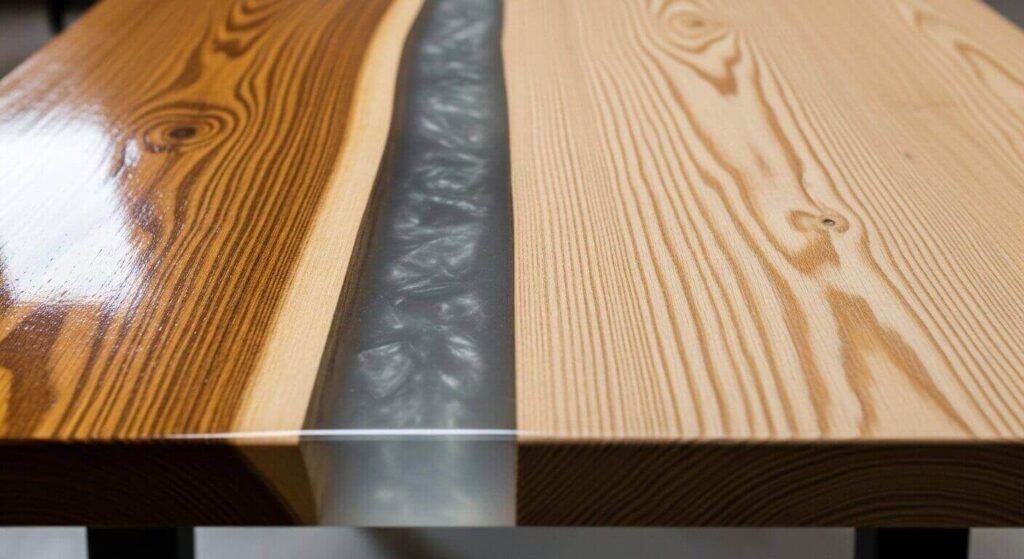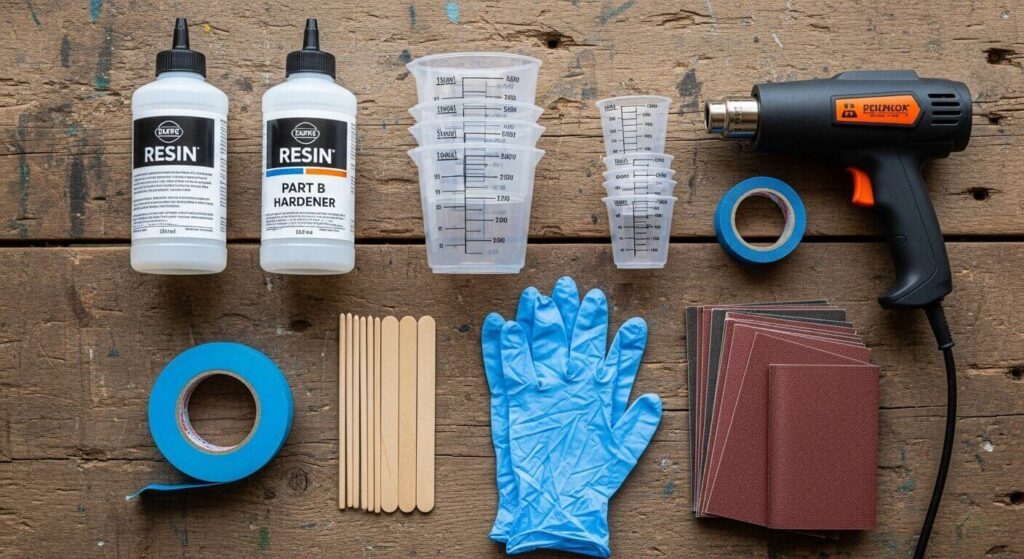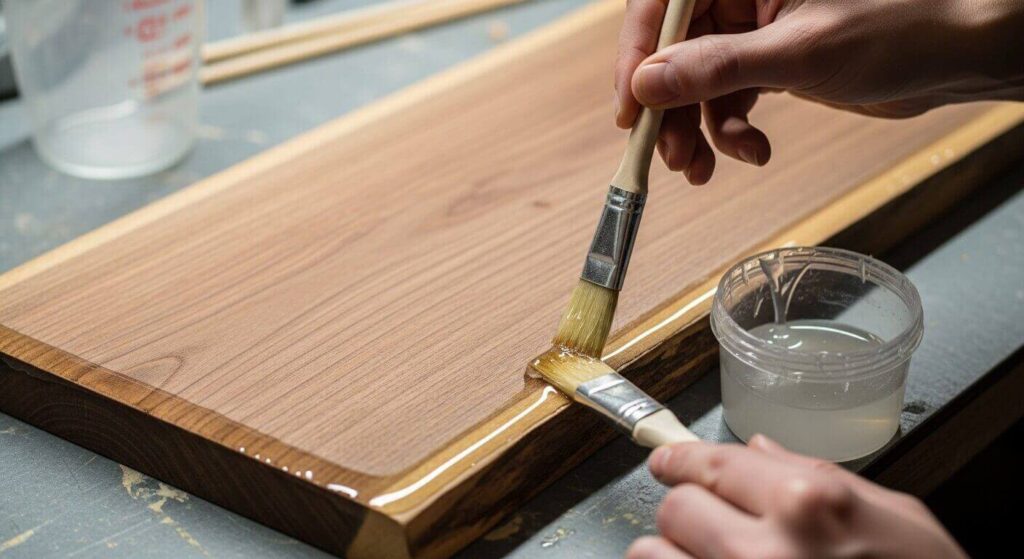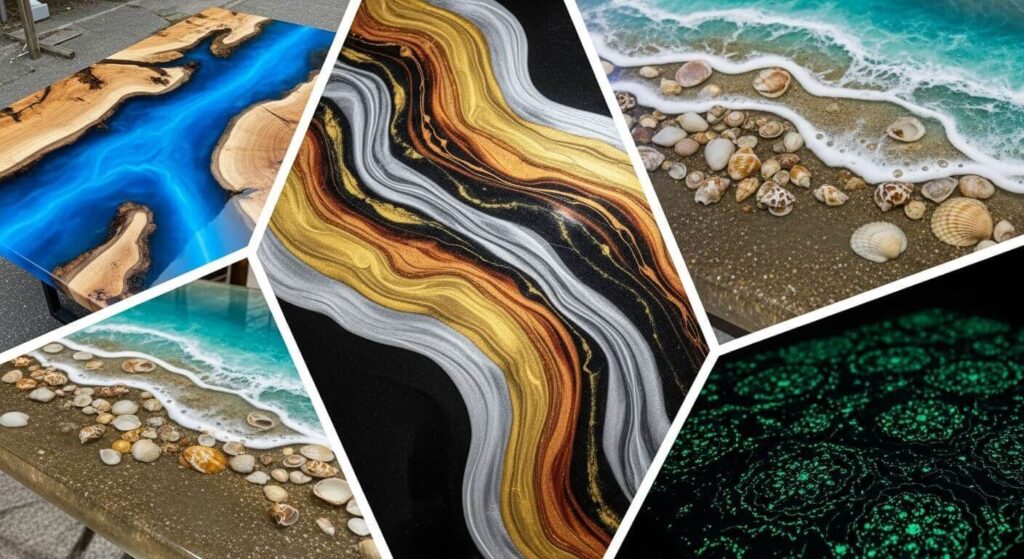If you’ve ever admired a sleek, glass-like surface on a wood table, chances are you’ve seen epoxy resin in action. In this guide, you’ll learn exactly how to epoxy a table top for professional-looking results at home. We’ll cover choosing the right table top epoxy resin, preparing the wood table and resin surface, applying a seal coat epoxy, and achieving that perfect clear coat table finish.
You may also like: 10 Proven Steps to Mastering How to Epoxy a Table Top for a Stunning Finish
This isn’t just theory — by the end, you’ll know how to transform anything from a simple diy resin tabletop to an intricate resin and wood table top into a showpiece that lasts for years.
Why Epoxy Is Perfect for Table Tops

Epoxy creates a durable, waterproof, and high-gloss surface that enhances wood grain and protects it from spills, scratches, and UV damage. Whether you’re working on a wood epoxy table top, table with resin top, or experimenting with cool epoxy table ideas, the process remains similar — and the results can be stunning.
Benefits of using epoxy for tables:
- Resistant to stains and moisture
- Easy to clean (just a damp cloth does the trick)
- Versatile — can be clear, tinted, or combined with pigments
- Works well for resin and wood table top designs
- Adds depth and richness to natural wood tones
Tools & Materials You’ll Need

Before starting, gather:
- Epoxy for table making (choose a high-quality table top epoxy)
- Measuring cups with volume marks
- Stir sticks
- Painter’s tape to mask edges
- Gloves & protective eyewear
- Sandpaper (80, 120, 220 grit)
- Heat gun or propane torch (for removing bubbles)
- Drop cloth to protect your workspace
- Leveling tools (to ensure even curing)
Tip: Always check your product’s curing time and working temperature range — epoxy can be sensitive to humidity and temperature.
Step-by-Step Guide — How to Epoxy a Table Top

Step 1 — Prepare the Surface
Start with a clean, dry, and level table. Sand the wood table and resin surface using 80–120 grit sandpaper to remove imperfections. Finish with 220 grit for smoothness, then wipe away dust with a tack cloth.
Step 2 — Seal the Edges
Apply a thin seal coat epoxy to edges, cracks, and knots. This locks in loose fibers and prevents air bubbles from escaping during the main pour.
Step 3 — Mask and Level
Use painter’s tape along the edges and underneath to prevent drips. Ensure your table is perfectly level — epoxy is self-leveling but only on a level surface.
Step 4 — Mix the Epoxy Resin
Measure your epoxy resin on wood table carefully, usually in a 1:1 or 2:1 ratio depending on the product. Stir slowly for 3–5 minutes, scraping the sides and bottom of your container to ensure a complete mix.
Step 5 — First Pour
Pour your resin for table top in a zig-zag pattern. Use a plastic spreader or notched trowel to spread evenly. Aim for a thin, even layer for the first coat.
Step 6 — Remove Bubbles
After pouring, pass a heat gun or torch over the surface about 6–8 inches away. This will cause air bubbles to rise and pop. Repeat every 5–10 minutes during the initial curing phase.
Step 7 — Second Layer (Optional for Depth)
For designs such as a resin pour table or metallic swirls, add a second layer after the first has cured to a firm but slightly tacky state. You can also incorporate pigments for epoxy colors for tables.
Step 8 — Let It Cure
Follow your epoxy manufacturer’s instructions — usually 24–72 hours for a full cure. Keep dust, pets, and curious fingers away during this time.
Step 9 — Final Sand & Polish
Once fully cured, lightly sand with 1,000–2,000 grit wet/dry sandpaper, then buff with a polishing compound for a flawless epoxy resin finish for wood.
Step 10 — Enjoy Your New Table
Your finished epoxy resin tabletop should be crystal clear, smooth to the touch, and ready to wow your guests.
Maintenance & Care for Epoxy Tables
- Wipe regularly with a soft, damp cloth
- Avoid harsh cleaners — stick to mild soap and water
- Use coasters and placemats to prevent scratches
- Reapply clear coat table if dullness develops
- For minor scratches, sand and add a resin coat wood layer
For more detailed care tips, check this epoxy furniture maintenance guide.
Creative Epoxy Table Ideas

- Diy resin table top with embedded stones or shells
- Poured epoxy table top with metallic pigments
- Resin and wood table top featuring a river design
- Table with epoxy top mixed with glow-in-the-dark powder
- Clear resin table with preserved flowers or memorabilia
Troubleshooting Common Problems
Bubbles after curing — Sand down the area and reapply a thin layer.
Uneven surface — Table wasn’t level; sand down high spots and recoat.
Sticky finish — Epoxy was under-mixed or poured in the wrong ratio. Scrape off and redo.
Cloudiness — Caused by moisture or improper mixing; sand and recoat with a table top resin epoxy.
Safety Tips When Working with Epoxy
- Always wear gloves and safety glasses
- Work in a well-ventilated area
- Avoid skin contact — epoxy can cause allergic reactions
- Dispose of leftover resin responsibly
FAQs
Can I epoxy over varnished wood?
Yes, but you’ll need to sand the varnish to a dull finish for proper bonding.
How thick should a table top epoxy layer be?
Typically, 1/8″ to 1/4″ is ideal for a single pour.
How do I fix bubbles in cured epoxy?
Sand them out and recoat with a thin resin coat wood layer.
How much epoxy do I need for a table top?
Use a volume calculator — most epoxy for wooden table projects need 1–2 gallons.
Can I tint epoxy resin?
Yes — pigments, dyes, and mica powders can create epoxy colors for tables that range from subtle to vibrant.
How long will an epoxy table last?
With proper care, decades. Epoxy is extremely durable and scratch-resistant.


Leave a Reply